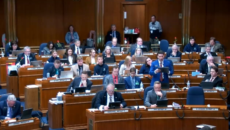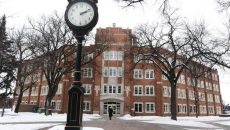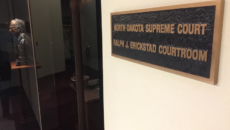Dorso Column: North Dakota's Higher Ed Problems May Lay In K-12 Education
I agree with Rob that there is a better governance model for higher education in North Dakota. However, I don’t think it is entirely the systems fault that a college diploma is so expensive. There are some solutions for the current state of affairs but we must look below the surface.
If the legislature wants to get to the heart of the problem they are going to have to take on the North Dakota Education Association and the North Dakota School Boards Association. Both organizations have successfully kept the discussion about K-12 performance on monetary issues. The real facts are that for all of the hundreds of millions spent, the quality of education delivered in K-12 isn’t improving. In some instances it can be blamed on regulations. Getting out from under the Federal regulators would be a good start. There is also the fact that society has changed and public elementary schools have become little more than babysitting services. High schools are warehouses for teenagers required to attend but with little expectation of gaining any cognitive skills.
Added to this is the requirement that any student with a North Dakota high school diploma must be accepted into the North Dakota higher education system. Colleges accept the under educated student to enhance their enrollment numbers. College becomes a high school extension for students who have no idea where their life is going or what they’ll need to be successful. The difference is part of the cost is a direct responsibility of the student or the parents.
What the legislature has to wrestle with is this. Do they continue to subsidize this societal trend? The question is also appropriate to preschool programs. Head Start is known nationally to be a waste of taxpayer’s money, from an educational perspective. Is beginning college the same as Head Start for an older student? Only in this case we’ll call it Slow Start.
Some years ago if you didn’t know what you wanted to be you took a break from formal education. You might have entered military service or gone to the Peace Corp until you got your act together. Of course joining the work force was an alternative. What you didn’t have as an alternative was the easy student loan. You paid for a college education with money you or your parents earned.
Student loans have perpetuated a system where the university system collects millions from students ill prepared to be there or have no idea where they are going. We have created an educational system which serves a few at the expense of many.
From what I can gather the new head of DPI is trying to make some significant changes. Her initiative to coordinate high school courses with those areas needing improvement for college bound students is the correct approach. What I see is that it will be difficult to get the school districts to change their ways. The first thing heard will be “It takes more money”. How about we penalize the district if they certify the student is prepared and they are not. Let’s charge back the cost of remedial education.
Instead of adding more programs to K-12 responsibility like early childhood programs let us focus on the problem areas. Ms. Baesler has enough on her plate.
I have no doubt there are many ideas on how to change the dynamics of the educational system. The ones I reject are that more money will solve the problem. When the legislature says, “We are not going to fund the status qou for K-12 or the higher ed system.” significant change becomes a possibility.







